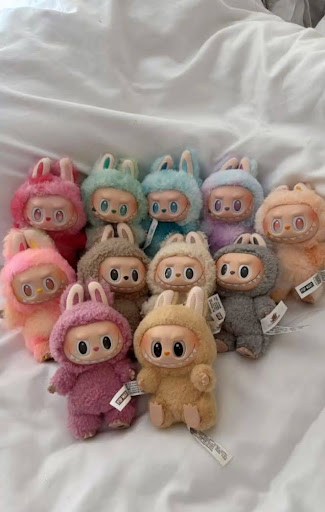By now, you’ve most likely witnessed the cultural phenomenon that is Labubus. A blind-box brand that took the internet by storm in the summer of 2025 for its’ surprise effect and ugly-cute snaggle teeth.
The Labubu virality surrounds celebrity endorsements, such as Lisa from Blackpink, members of BTS, and even Rihanna.
However, most consumers are unaware of the significantly negative environmental impact that overconsumption of this microtrend causes.
“Labubus” are made of plastics called polyvinyl chloride (PVC) and polyester fabric, which is derived from fossil fuels. The manufacturing process of these collectables is highly polluting, producing significant amounts of toxic substances and greenhouse gases—the production and disposal of PVC releases dioxins, which have serious ecological and health implications.
Even the packaging is harmful because most of it is non-recyclable and will endure in the environment for hundreds of years, contributing to the Global plastic pollution crisis. People who buy surplus of these products or get duplicates will add to the significant waste.
Microtrends are short-lived and will usually only last up to a few months to a year. A good example of this phenomenon is water bottle trends, because it seems every year there is a new trendy water bottle. First it was Hydro Flasks, then Swells, then Stanleys, then Owalas. I must admit, I, too, fell victim to these trends, and now have multiple perfectly functional water bottles that are collecting dust.
I still remember when Sonny Angels were the big thing, then to see Smiskis arise, only for both of them to die down in the span of a few months, and now it is Labubus’ turn.
It is becoming the tale as old as time, where versions of similar products replace each other every few months. Then, no one knows what to do with the old thing, so they either throw it out or put it out of sight, never giving it a second thought.
Microtrends help people feel like they fit in because they have this coveted item that is all the rage, so they themselves are. The issue is that lots of people buy these things only because they are deemed trendy, not because they genuinely like them.
Blind Box brands’ marketing uses the psychology of anticipation for unknown outcomes as a marketing strategy. “The very point about blind boxes is the unknown, the uncertainty. There is some inherent curiosity about what someone’s gonna get. That brings about a certain degree of excitement when people are buying blind boxes,” stated Chris Wong, a senior clinical psychologist.
It’s almost the same as gambling. When someone buys a blind box, they don’t have any idea of what variant they’ll get, but there is one they are certainly hoping for. Typically, when someone doesn’t get the variant they want, they’ll keep buying until they do get it. It can get so extreme that hundreds of dollars are spent on blind boxes by just one person. Some people see these toys as collectible items and justify the extreme spending by calling it an achievement of sorts. But what happens when they get duplicates? What happens when the collection becomes cluttered?
Usually, after initial excitement, the toys lose their appeal and end up being discarded. All the money and materials go to just sit in a landfill. This is not sustainable and will severely impact our ecological footprint.
Trends are good in society; what isn’t normal is the shortness of these trends that seemingly come and go in the blink of an eye. Good trends last, not flicker. So if you ever think about getting a “Labubu”, ask yourself, How long will I really use it?

